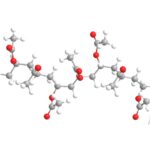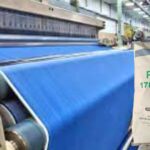Polyvinyl Alcohol (PVA): The Science Behind Its Diverse Applications
Polyvinyl Alcohol (PVA) is a versatile polymer with tunable properties based on its degree of polymerization (DP) and degree of alcoholysis (DH). High DP PVA results in high viscosity and strength, suitable for applications like textile sizing and high-strength adhesives. Low DP PVA offers low viscosity and fast dissolution, ideal for low-viscosity adhesives and cosmetics. Low DH PVA provides excellent water solubility, making it suitable for textile sizing and water-soluble films. High DH PVA exhibits excellent water resistance and chemical stability, used in food packaging and pharmaceuticals.

How Degree of Polymerization (DP) and Alcoholysis (DH) Affect PVA Properties
The properties of Polyvinyl Alcohol (PVA) are primarily determined by its Degree of Polymerization (DP) and Degree of Alcoholysis (DH). These parameters directly influence PVA’s physical, chemical, and application performance. Below is an explanation of how DP and DH affect PVA properties, as well as the applications of PVA with different properties.
1. Impact of Degree of Polymerization (DP)
The Degree of Polymerization refers to the number of repeating units in the PVA molecular chain. It mainly affects the following properties:
- Viscosity:
- Higher DP results in longer molecular chains and higher solution viscosity.
- High-viscosity PVA is suitable for applications requiring strong adhesion and film-forming properties.
- Low-viscosity PVA is ideal for applications requiring fast dissolution and good fluidity.
- Mechanical Strength:
- High-DP PVA has higher tensile strength and toughness, making it suitable for high-strength films and fibers.
- Low-DP PVA has lower mechanical strength but better flexibility.
- Solubility:
- High-DP PVA dissolves more slowly and requires higher temperatures or longer dissolution times.
- Low-DP PVA dissolves quickly, making it suitable for applications requiring rapid film formation or adhesion.
2. Impact of Degree of Alcoholysis (DH)
The Degree of Alcoholysis refers to the proportion of hydroxyl groups (-OH) in the PVA molecule. It mainly affects the following properties:
- Water Solubility:
- Low-DH PVA (e.g., 88%) has better water solubility and can even dissolve in cold water, making it suitable for applications requiring fast dissolution.
- High-DH PVA (e.g., 99%) only swells in cold water and requires heating for complete dissolution, making it suitable for applications requiring water resistance.
- Water Resistance:
- High-DH PVA has better water resistance, making it ideal for materials used in wet or humid environments.
- Low-DH PVA has poorer water resistance but better flexibility and adhesion.
- Chemical Stability:
- High-DH PVA has higher chemical stability and better resistance to acids and bases.
- Low-DH PVA has slightly lower chemical stability but higher reactivity, making it suitable for chemical modification.
3. Applications of PVA with Different Properties
Based on variations in DP and DH, PVA’s properties are tailored for specific applications:
1. High-DP PVA (e.g., PVA-1799, PVA-2699)
- Characteristics: High viscosity, high strength, excellent water resistance.
- Applications:
- Textile Sizing: Enhances fiber strength and wear resistance.
- High-Strength Adhesives: Used for bonding wood, paper, and packaging materials.
- Film Materials: Used for high-transparency, high-strength packaging films and agricultural mulch films.
- Construction Materials: Used as cement additives and tile adhesives.
2. Medium-DP PVA (e.g., PVA-2488, PVA-2499)
- Characteristics: Medium viscosity, good film-forming and adhesive properties.
- Applications:
- Coatings and Paints: Used in water-based paints for excellent film-forming and adhesion properties.
- Paper Coatings: Improves paper strength and printability.
- Emulsifiers: Acts as a protective colloid in emulsion polymerization.
3. Low-DP PVA (e.g., PVA-0588, PVA-0388)
- Characteristics: Low viscosity, fast dissolution, good flexibility.
- Applications:
- Low-Viscosity Adhesives: Used for quick bonding of paper and packaging materials.
- Cosmetics and Personal Care: Used as film-forming agents and stabilizers in masks and skincare products.
- 3D Printing Materials: Used as water-soluble support materials.
4. Low-DH PVA (e.g., PVA-1788, PVA-2088)
- Characteristics: Excellent water solubility, high flexibility, strong adhesion.
- Applications:
- Textile Sizing: Used as temporary protective coatings for fibers.
- Water-Soluble Films: Used in pesticide packaging and detergent packaging.
- Construction Adhesives: Used for applications requiring fast dissolution and bonding.
5. High-DH PVA (e.g., PVA-1799, PVA-2699)
- Characteristics: Excellent water resistance, high chemical stability, high mechanical strength.
- Applications:
- Food Packaging: Used for high-transparency, high-strength biodegradable packaging films.
- Pharmaceuticals: Used in drug delivery systems and medical films.
- Specialty Adhesives: Used for bonding applications requiring water and chemical resistance.
4. Summary
- Degree of Polymerization (DP) mainly affects PVA’s viscosity, mechanical strength, and solubility. High-DP PVA is suitable for high-strength, high-viscosity applications, while low-DP PVA is ideal for fast-dissolving and low-viscosity applications.
- Degree of Alcoholysis (DH) mainly affects PVA’s water solubility, water resistance, and chemical stability. Low-DH PVA is suitable for applications requiring high water solubility, while high-DH PVA is ideal for applications requiring water and chemical resistance.
By adjusting DP and DH, PVA can be customized to meet the needs of various applications, making it a versatile material widely used in textiles, paper, construction, pharmaceuticals, packaging, and more.



